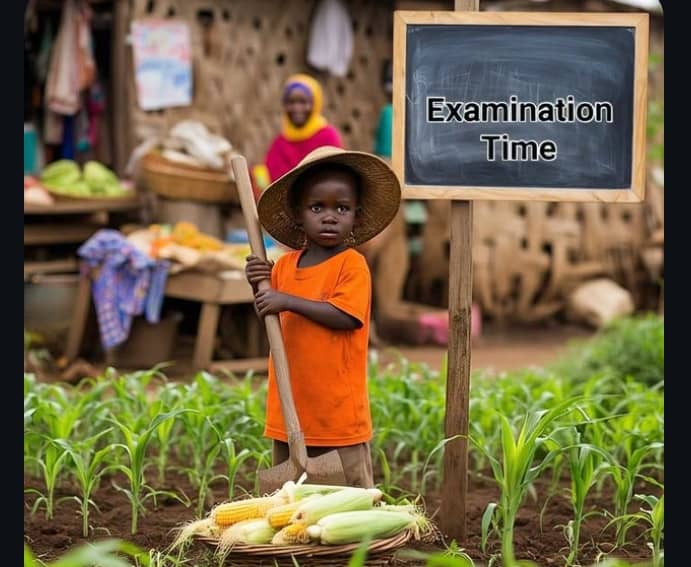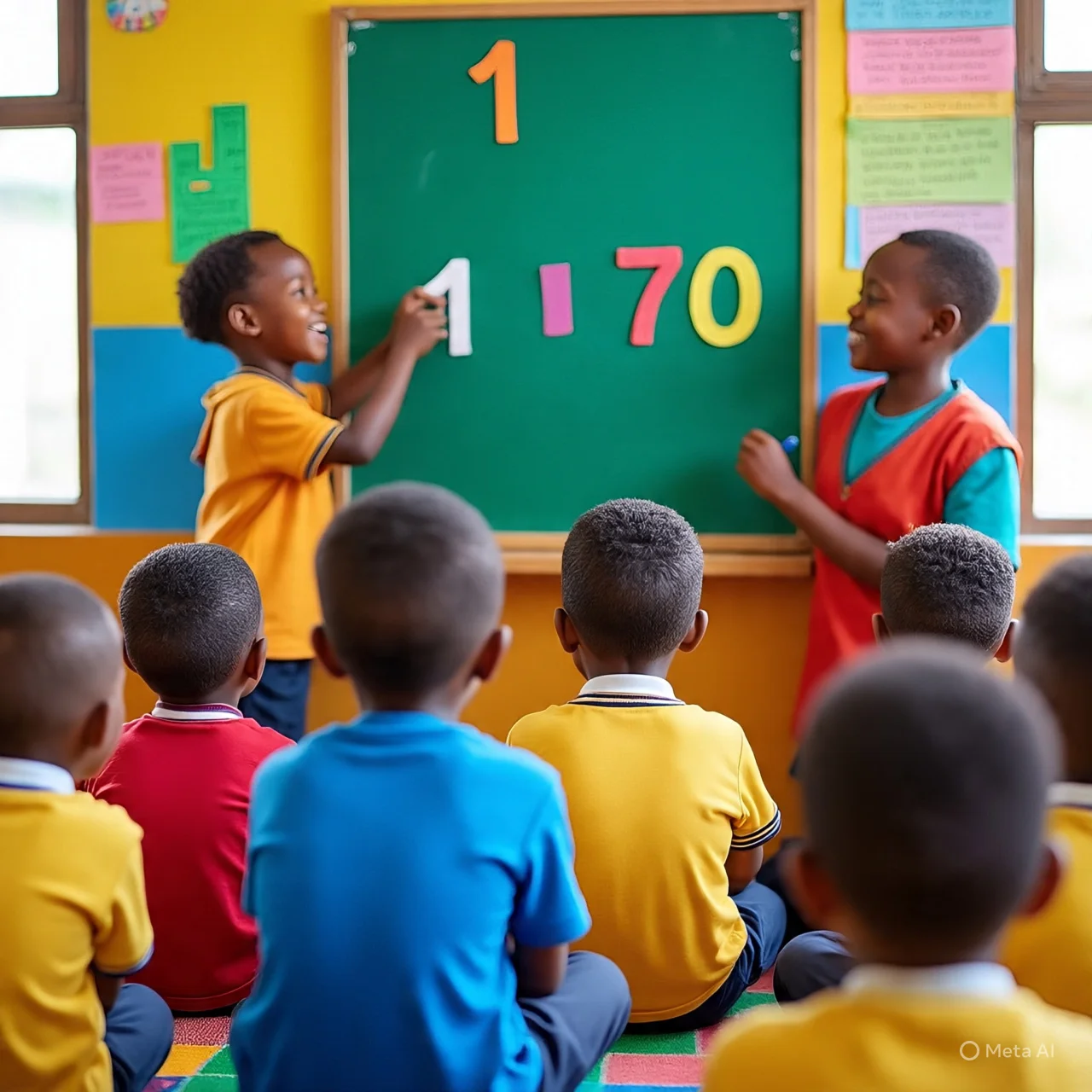Light Energy for Primary 1: Sources and Importance
Light Energy – Primary 1 BST – Second Term Lesson Note (Week 6)
(Student-centred, Lagos-State aligned, simple, warm, and real-life)
Subject: Basic Science & Technology
Class: Primary 1
Term: Second Term
Week: 6
Age: 5–6 years
Topic: Light Energy
Sub-topic: Sources and Importance of Light Energy
Duration: 40 minutes
Behavioural Objectives
By the end of this lesson, pupils should be able to:
- Explain the meaning of light energy.
- Mention at least five sources of light.
- Identify natural and artificial sources of light.
- State at least five uses of light energy.
- Give examples of things that work with light.
- Recognize why light is important to humans, plants, and animals.
Keywords and Meanings (10)
- Light – What helps us see things.
- Energy – Power that makes things work.
- Light Energy – The energy that allows us to see.
- Sun – The biggest natural source of light.
- Moon – A natural light seen at night.
- Stars – Small bright lights in the sky at night.
- Torchlight – A small lamp powered by batteries.
- Bulb – An electric light.
- Fire – Burning flame that gives light.
- Candle – A stick of wax that gives light when it burns.
Set Induction (Attention-Grabbing Story)
Teacher tells a simple story:
“Children, yesterday night NEPA took light in my street. Everywhere became dark. I tried to walk to the kitchen, but I hit my toe on a chair. Ah! It was painful! Immediately I on my torchlight, I could see everything clearly. Then I smiled and said, ‘Light is truly a helper.’ Today, we will learn about light energy—what it is, where it comes from, and why we need it.”
Entry Behaviour
Pupils have seen light in their homes (bulbs, TV, torchlight) and natural light from the sun.
Learning Resources and Materials
- Picture charts
- Torchlight
- Candle (unlit for safety)
- Flashcards
- Small lamp
- Video of light sources
Building Background / Connection to Prior Knowledge
Pupils previously learned “Soil: Types and Importance.”
Now they learn about light, another key part of daily life.
Embedded Core Skills
- Observation
- Creativity
- Critical thinking
- Communication
- Science process skills
Reference Books
- Lagos State Unified Scheme of Work – BST Primary 1
- UBE Basic Science & Technology Textbook
Instructional Materials
- Torchlight
- Bulb
- Candle
- Sunlight (natural)
- Pictures of stars, moon, fireflies
CONTENT – Child-friendly and Structured
A. Meaning of Light Energy
Light energy is:
- The type of energy that helps us see.
- A form of kinetic energy that moves in straight lines.
- Energy that comes from different sources.
- What makes day bright and night visible with lamps.
- Important to plants, humans, and animals.
B. Sources of Light Energy (Meaning + 5 Examples Each)
1. Natural Sources of Light
These give light on their own.
Examples:
- The sun
- The moon
- The stars
- Fireflies
- Lightning
2. Artificial Sources of Light
These are man-made light sources.
Examples:
- Electric bulb
- Torchlight
- Candle
- Lantern
- TV screen
C. Importance / Uses of Light Energy (10 Examples)
- Light helps us see.
- Light helps plants grow.
- Light is used to cook (sun or fire).
- Light is used in traffic lights.
- Light helps cameras work.
- Light is used in home appliances like TV and fans.
- Light helps us stay warm.
- Light helps in photocopying.
- Light helps doctors in the hospital.
- Light helps cars at night with headlights.
PRESENTATION STRUCTURE
Step 1 – Revision of the Previous Lesson
Teacher reviews “Soil: Types and Importance.”
Step 2 – Introduce the New Topic
Teacher presents a torchlight and switches it on.
Step 3 – Encourage Pupils’ Contribution
Pupils mention where they see light at home or school.
Teacher’s Activities
- Display different light sources.
- Explain meaning of light energy.
- Differentiate natural and artificial light.
- Use examples pupils can relate to.
- Demonstrate with a torchlight.
- Ask guided questions.
- Supervise group activities.
Learners’ Activities
- Observe light sources.
- Touch and explore materials.
- Mention uses of light.
- Answer questions.
- Participate in discussions.
CLASS ACTIVITY DISCUSSION (10 FAQs with Answers)
- Q: What is light energy?
A: It is the energy that helps us see. - Q: What is the biggest source of light?
A: The sun. - Q: Is a candle natural or artificial?
A: Artificial. - Q: Name a natural light seen at night.
A: The moon. - Q: What helps plants grow?
A: Light. - Q: What do we use to see in the dark?
A: Torchlight. - Q: Mention one artificial light.
A: Bulb. - Q: Why do we need light?
A: To see. - Q: Light helps us feel _____.
A: Warm. - Q: Name one animal that produces light.
A: Firefly.
EVALUATION QUESTIONS
A. Fill-in-the-Blank (with Options)
- The sun is a ______ source of light. (a) artificial (b) natural (c) fake)
- Light helps us ______. (a) see (b) jump (c) eat)
- A bulb is an ______ source of light. (a) natural (b) artificial (c) animal)
- Plants need ______ to grow. (a) sand (b) light (c) toys)
- Fire is a source of ______. (a) light (b) water (c) wind)
- We can use a ______ at night to see. (a) torchlight (b) spoon (c) cup)
- The moon gives us ______. (a) light (b) food (c) noise)
- A candle gives ______ when it burns. (a) water (b) smoke (c) light)
- Stars are seen in the ______. (a) morning (b) afternoon (c) night)
- Light keeps us ______ in cold weather. (a) warm (b) hungry (c) sad)
B. Short Answer Questions (10)
- What is light energy?
- Mention one source of light.
- Is the sun natural or artificial?
- Name one artificial light.
- What helps us see?
- Mention one use of light.
- Name a natural light seen at night.
- Which light uses batteries?
- Give one reason why plants need light.
- Mention one thing that works with light.
Assessment (10 Short Questions)
- What is light?
- Mention one natural light.
- Mention one artificial light.
- What is the sun used for?
- Why do humans need light?
- Name one source of heat and light.
- Give one example of artificial light.
- Write one use of light.
- What gives light when it burns?
- Why is light important in the hospital?
Conclusion
Teacher checks each child’s work, gives corrections, praises effort, and reinforces the importance of light energy.
Internal Links
- Visit our Primary School Lesson Plans for more weekly notes.
- Read our Basic Science Lessons for young learners.
- Methods of Waste Disposal – Primary 5 Basic Science First Term Week 10
WEEKLY BREAKDOWN (MONDAY–FRIDAY)
Topic for the Week: Light Energy
Class: Primary 1
Second Term – Week 6
✨ MONDAY – Meaning of Light Energy + Simple Demonstration
A. In-depth Meaning of Light Energy
Light energy is:
- The energy that helps the eyes to see things.
- A form of energy that travels in straight lines.
- The brightness we get from the sun, bulbs, or fire.
- The type of energy that makes a place bright.
- What helps us know day from night.
Explain with Examples (5 Examples):
- When NEPA brings light, everywhere becomes bright — that is light energy in action.
- When the sun shines in the morning — that is light energy.
- When you on your torchlight at night — the brightness is light energy.
- When fire burns and glows — that glow is light energy.
- The light coming from a candle or lamp — is light energy.
Activities for Monday
- Pupils close their eyes; teacher turns on a torchlight.
- Pupils open eyes and say what they can now see.
- Teacher explains: “What helps your eyes see this? Light energy!”
✨ TUESDAY – Natural Sources of Light Energy
A. Meaning
Natural sources of light are things that give light on their own without man making them.
Examples (Explain Each – 5 Examples):
- The Sun – The biggest and brightest natural light; gives us daylight.
- The Moon – Shines at night and gives little natural light.
- Stars – Tiny lights in the sky at night.
- Fireflies – Small insects that produce glowing light.
- Lightning – Bright light seen during thunderstorms.
Simple Explanation for Children:
- The sun lights up the world naturally.
- The moon and stars help us see at night.
- Fireflies glow by themselves.
- Lightning flashes naturally during rain.
Activities for Tuesday
- Show pictures of sun, moon, stars, fireflies, and lightning.
- Ask pupils to point and name each one.
- Let pupils act like a “shining sun” or “blinking star.”
✨ WEDNESDAY – Artificial (Man-Made) Sources of Light Energy
A. Meaning
Artificial sources of light are things made by humans to give light.
Examples (Explain Each – 5 Examples):
- Electric Bulb – Light we use in the house.
- Torchlight – Light from batteries used in darkness.
- Lamp/Lantern – Used when electricity is not available.
- Candle – Burns to give light when there is no electricity.
- Phone Light – The light from a phone screen or flashlight.
Simple Explanation for Children:
- We make bulbs, torches, and lamps to help us see.
- These lights help us in darkness or at night.
- Artificial lights work with batteries, oil, kerosene, or electricity.
Activities for Wednesday
- Switch on a bulb (or torchlight).
- Let pupils identify if it is “natural” or “artificial.”
- Pupils mention artificial lights they see at home.
✨ THURSDAY – Importance of Light Energy
A. In-depth Meaning of Importance
Importance means why something is useful.
Uses of Light Energy (Explain Each – 5 Expanded + 5 More):
Main 5 Expanded Uses
- It helps us see.
Without light, everywhere is dark. - It helps plants grow.
Plants need sunlight to make food. - It helps us feel warm.
Sunlight keeps our body warm. - It helps machines work.
TVs, bulbs, traffic lights all need light. - It helps doctors treat sick people.
Hospitals use light to see inside rooms and during operations.
Additional 5 Uses
- Light helps us take pictures (cameras).
- Light helps cars move safely at night (headlights).
- Light is used in cooking (sun or fire).
- Light helps students read and write at night.
- Light helps keep us safe in the dark.
Activities for Thursday
- Teacher shows pictures of things that need light (TV, plant, traffic light).
- Pupils say what light helps them do at home.
✨ FRIDAY – Review, Reinforcement, and Example Expansion
A. Deep Review of the Week’s Work
What Light Energy Is – With 5 More Examples
- Light from NEPA bulbs.
- Light from Christmas lights.
- Light from a car headlamp.
- Light from a generator-powered home.
- Light from a reading lamp.
Natural Sources – 5 Extra Examples
These occur naturally:
- Hot lava glow.
- Glowworms.
- Sun rays through clouds.
- Morning sunrise glow.
- Burning wood in the forest.
Artificial Sources – 5 Extra Examples
Made by humans:
- Street lights.
- Rechargeable lamps.
- Solar lamps.
- Flashing disco lights.
- Fireworks (produce bright light).
Importance of Light – 5 Additional Examples
- Used in traffic control.
- Helps photographers take clear pictures.
- Used in classrooms for learning.
- Helps security lights work at night.
- Helps factories operate machines.
FRIDAY CLASS ACTIVITIES
- Pupils draw any source of light.
- Pupils match natural and artificial light pictures.
- Pupils answer simple oral revision questions.
- Pupils perform a role-play “I am a sun, I shine!”
- Teacher summarises all lessons.












